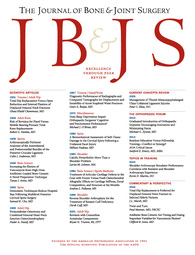
EVIDENCE BASED MEDICINE
Resident performance improved in knee arthroscopy with cadavers vs virtual simulation
J Bone Joint Surg Am. 2016 Feb 3;98(3):220-557 orthopaedic residents of various experience levels were randomized to receive either no training between assessments (control group) or to receive 4 hours of either arthroscopic cadaveric or virtual reality simulation training. The purpose of this study was to compare these knee arthroscopy training methods in terms of completion time and performance improvements. The results indicated that the arthroscopic performance (ASSET Global Rating Scale) and completion time were significantly more improved in the cadaveric training group when compared to the control group. As well, the cadaveric group displayed significantly better improvements with respect to completion time when compared to the residents receiving virtual simulation training. No significant differences were noted between the simulation and control group for either performance or time to completion outcomes.
Unlock the full ACE Report
You have access to {0} free articles per month.Click below to unlock and view this {1}
Unlock NowCritical appraisals of the latest, high-impact randomized controlled trials and systematic reviews in orthopaedics
Access to OrthoEvidence podcast content, including collaborations with the Journal of Bone and Joint Surgery, interviews with internationally recognized surgeons, and roundtable discussions on orthopaedic news and topics
Subscription to The Pulse, a twice-weekly evidence-based newsletter designed to help you make better clinical decisions
Exclusive access to original content articles, including in-house systematic reviews, and articles on health research methods and hot orthopaedic topics
Or upgrade today and gain access to all OrthoEvidence content for just $1.99 per week.
Already have an account? Log in


Subscribe to "The Pulse"
Evidence-Based Orthopaedics direct to your inbox.
{0} of {1} free articles
Become an OrthoEvidence Premium Member. Expand your perspective with high-quality evidence.
Upgrade Now












































































